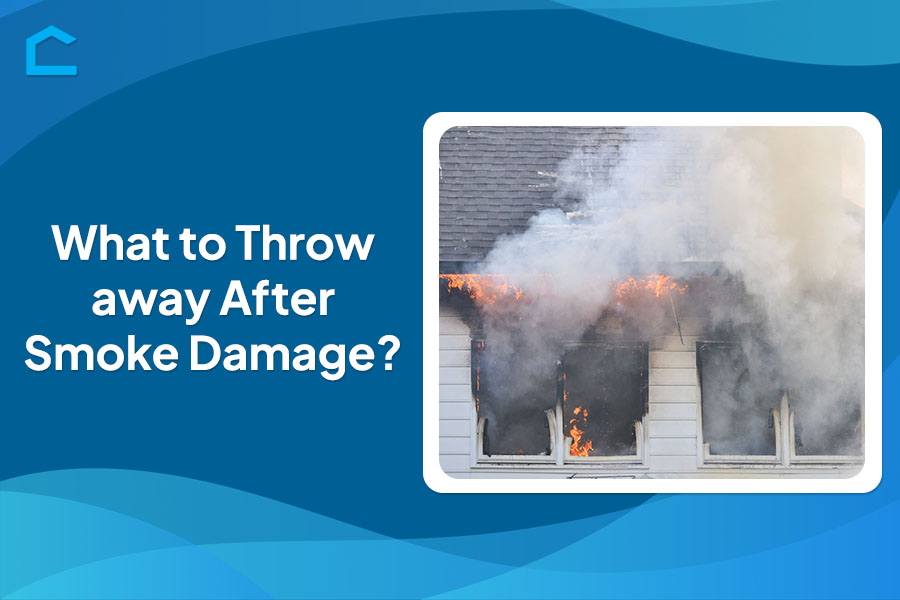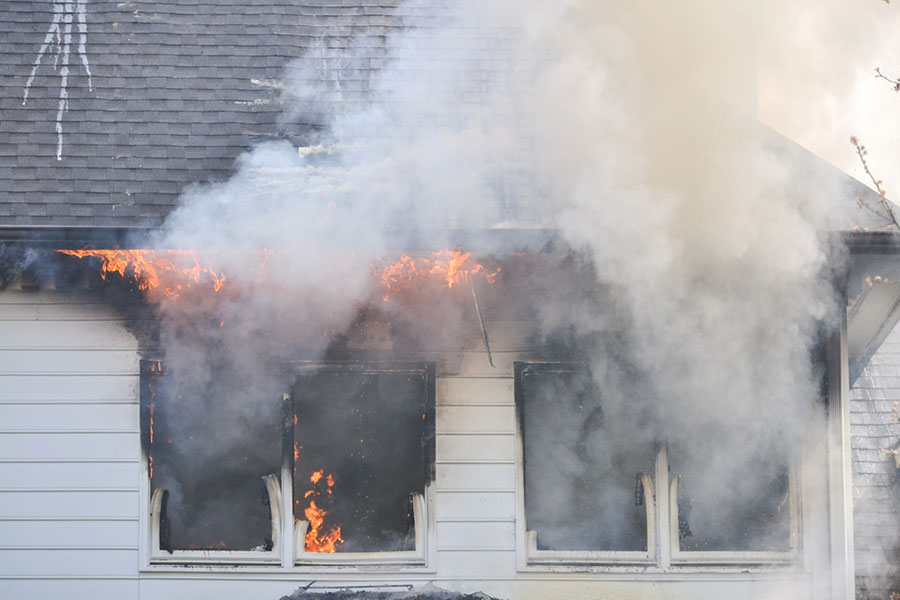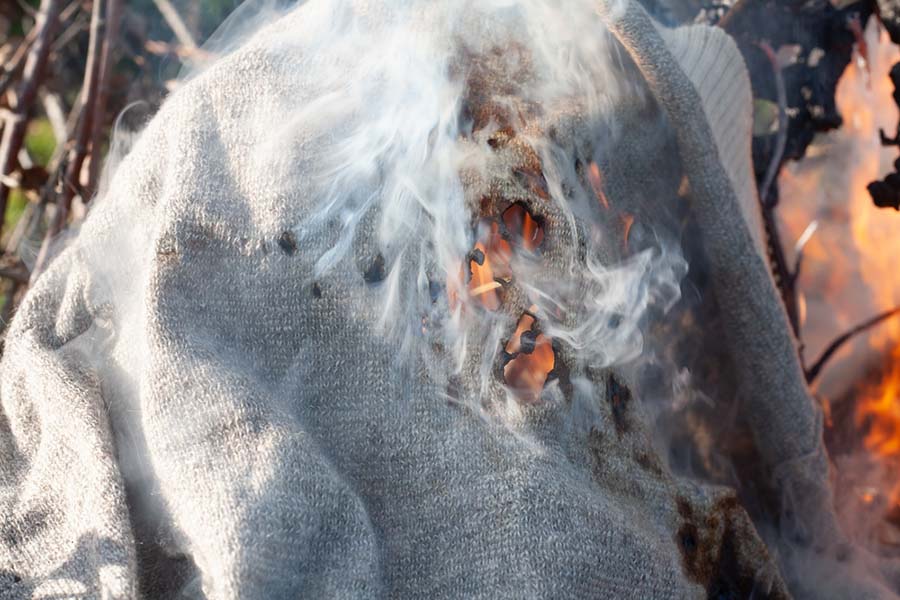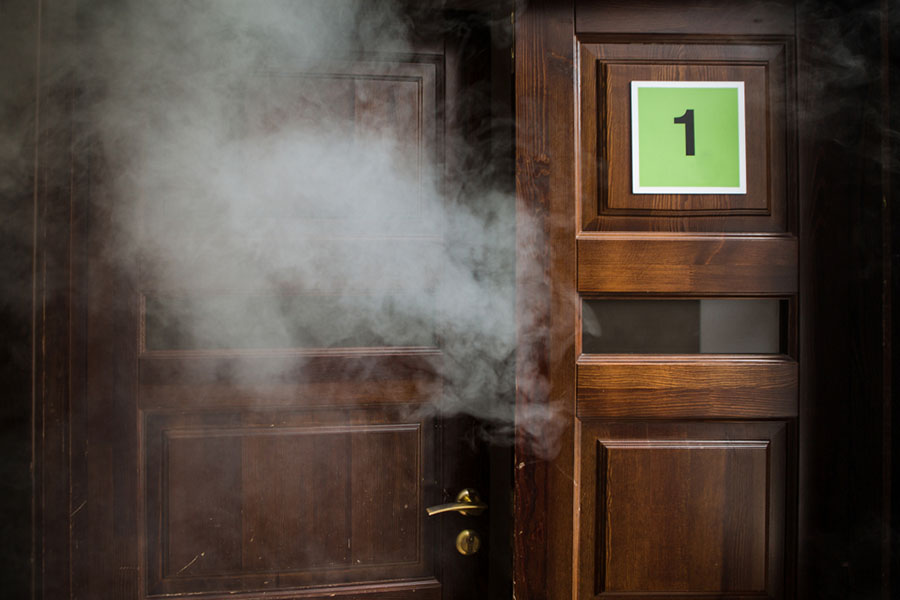What to Throw away After Smoke Damage?

When a fire strikes your home, the aftermath can be overwhelming. Even after the flames are extinguished, the lingering effects of smoke damage can pose significant challenges to your health and property.
As most people begin the daunting task of restoration, they may wonder what to throw away after smoke damage and what can be salvaged. This decision-making process is not only essential for your well-being but also plays a vital role in the overall recovery of your home.
In this comprehensive guide, we’ll explore the critical considerations surrounding smoke-damaged possessions. We will also dive into the factors that determine whether an item can be cleaned and restored or if it’s best to part ways with it.

Source: shutterstock.com / Photo Contributor: David Fossler
What to Throw Away After Smoke Damage
Perishable and Non-Perishable Food
After a fire or smoke damage, it’s crucial to discard any perishable food items that have been exposed to smoke. Smoke can contaminate these foods, making them unsafe to consume. Even if the food appears unharmed, it’s better to be safe and throw it away. As for non-perishable food items, inspect the packaging closely. Even if the food inside survives the flames, it could be terribly contaminated after the fire event.
In case the packaging is damaged and allows smoke and fumes to enter the package, discard the food immediately. Smoke and soot can penetrate even unopened packages, potentially compromising the food’s safety and quality. Discard any canned and jarred goods that appear to have been affected by heat or smoke, as the contents may have spoiled. Heat can activate harmful bacteria that rapidly spoil the food, which can make you sick right after eating the exposed food.
Medication and Cosmetics
Smoke exposure can also affect medication and cosmetic products. It’s advisable to discard any medication that has been exposed to smoke, as the smoke can contaminate the medication and reduce its effectiveness.
The same goes for cosmetics – products like makeup, skincare, and hair care items that have been exposed to high temperatures should be thrown away.
High temperatures can change the composition of cosmetics, making them unsafe for use. In some cases, smoke particles may end up trapped in the cosmetic package, causing skin and eye irritation. Even if the packaging appears intact, it’s best to stay cautious and replace any exposed medication or cosmetics.
Clothing and Textiles
When it comes to clothing and textiles, the decision to keep or discard them depends on the severity of the smoke damage. Assess each item carefully for smoke odor.
Heavily smoke-damaged items may be challenging to clean effectively, so it’s often better to discard them. However, some lightly smoke-damaged clothing and textiles can be cleaned and salvaged, depending on the effectiveness of the cleaning methods used.
Consider the item’s value and the effort required to remove the smoke odor before making a decision. Clothing and textiles made of synthetic materials may be more difficult to clean than natural fibers like cotton or linen.

Source: shutterstock.com / Photo Contributor: mutie
Soft Furnishings and Upholstered Furniture
Soft furnishings, such as curtains, bedding, carpets, and upholstered furniture, require special attention after smoke damage. Smoke odors can penetrate deep into the fibers and padding of these items, making them challenging to clean thoroughly.
Inspect each item carefully and consider the difficulty of cleaning and restoring it to a smoke-free condition. In some cases, professional cleaning may be required for upholstered furniture.
If the smoke damage is severe, it may be more practical to discard heavily affected items. Soft furnishings that cannot be adequately cleaned may continue to release smoke odors, making them unsuitable for use.
Electronics and Appliances
Finally, exercise caution when dealing with smoke-damaged electronics and appliances. Smoke exposure can cause corrosion and electrical malfunctions, posing potential safety hazards like malfunction or electrical fire.
Before attempting to use or repair any smoke-damaged electronics or appliances, consult with professional technicians or the manufacturers. They can assess the extent of the damage and provide recommendations on whether the item can be safely repaired or if it should be discarded.
In cases of heavy smoke damage, it’s often safer to discard the affected electronics and appliances to avoid potential risks. Attempting to repair or clean heavily smoke-damaged electronics may result in further damage or even a fire hazard.
Factors to Consider
Visual Inspection
When evaluating smoke-damaged items, thoroughly inspect each one for discoloration, odors, and residue deposits to determine what needs to be replaced after a house fire. Consider the intensity of any smoke odor present, as strong odors indicate heavier damage.
Porous materials like fabrics absorb odors more readily than non-porous items. Natural fibers may be easier to clean than synthetics.
Item Value
Assess the item’s monetary and sentimental value – high-value items may warrant professional cleaning efforts. Determine if the item can be effectively cleaned based on its material and construction, as some may resist conventional methods.
Health Risks and Cost-Benefit Analysis
Heavily contaminated items, especially those in direct contact with skin or food, should be discarded due to potential health risks from smoke exposure and particle release.
Also, consider the potential cleaning costs and efforts required for each item. In some cases, the cost of professional cleaning may exceed the item’s value, making replacement a more practical option.

Source: shutterstock.com / Photo Contributor: Aleksandr Tsybulskyy
Conclusion
In the aftermath of smoke damage, exercising caution and being discerning about what items to keep or discard is crucial. We hope this guide has thoroughly explored what to throw away after smoke damage and helped you make a smart decision.
While some possessions may be salvageable through thorough cleaning, others pose health risks or irreparable damage that warrants replacement. When making this decision, the perishables, medications, cosmetics, and heavily contaminated items should be discarded without hesitation.
For other belongings, carefully evaluate factors like material type, odor intensity, item value, and cleaning feasibility.
